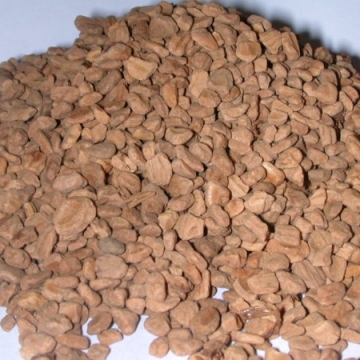Olive stones
Olive stones are a product of separation of the olive cake. Usually this is done by centrifugation or by putting olive cake into the water. In both cases olive stones are separated from the olive meat, olive skin and are used as a separate product.
If the centrifugation process is used, then so called “dark” olive stones are received, as it is more difficult to make a separation by centrifuges and some olive skin and olive meat will be present. Ash content of olive stones in this case will be on the level of 3-4%.
If the underwater method with later drying process is used, so called “pale” olive stones can be produced. Quantity of produced olive stones is significantly lower than olive cake volumes.
Olive stones are used only by some power plants as a fuel in combination with other biofuels. As an energy source, olive stones are used on much smaller scale than olive cake. Price of olive stones is also much higher. Especially, expensive can be “pale” olive stones with ash content below 2% (see the picture).
Olive stones could have limited use because of their hardness. Durability index (Hardgrove Grindability Index) of olive cake, for example, is 20 (the harder the product, the lower durability index). Durability index of sunflower husks is 18 and of olive stones, which are due to their hardness not used in the UK as biomass, is 15. Of course, durability would not be a problem for biomass dedicated power plants, which have totally different construction of the mills. But coal mills are not strong enough for olive stones.
There is also some other industrial use for olive stones, for example, in production of composite materials. Olive stones are also produced in olive oil second extraction factories, both in Spain and in Tunisia.







